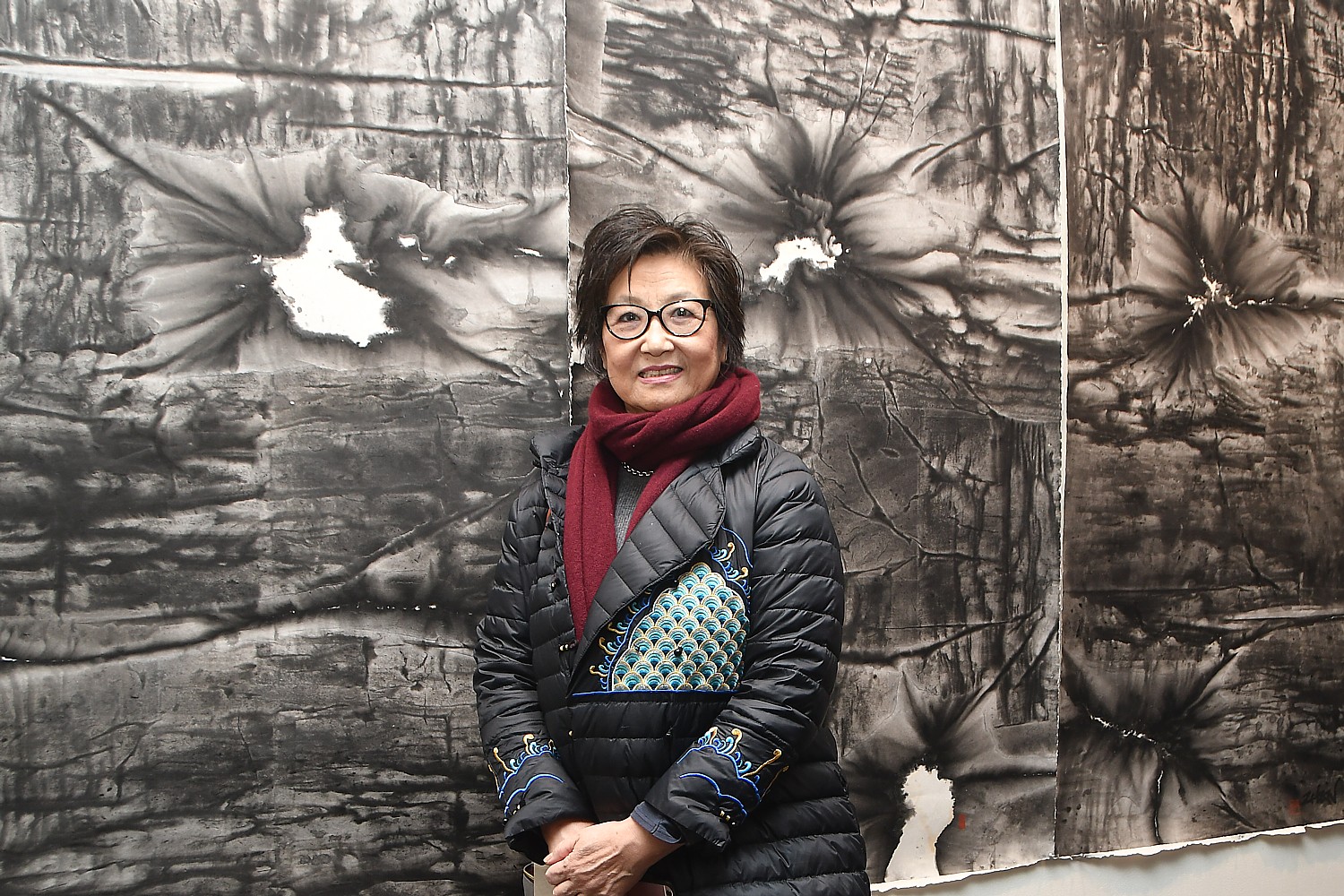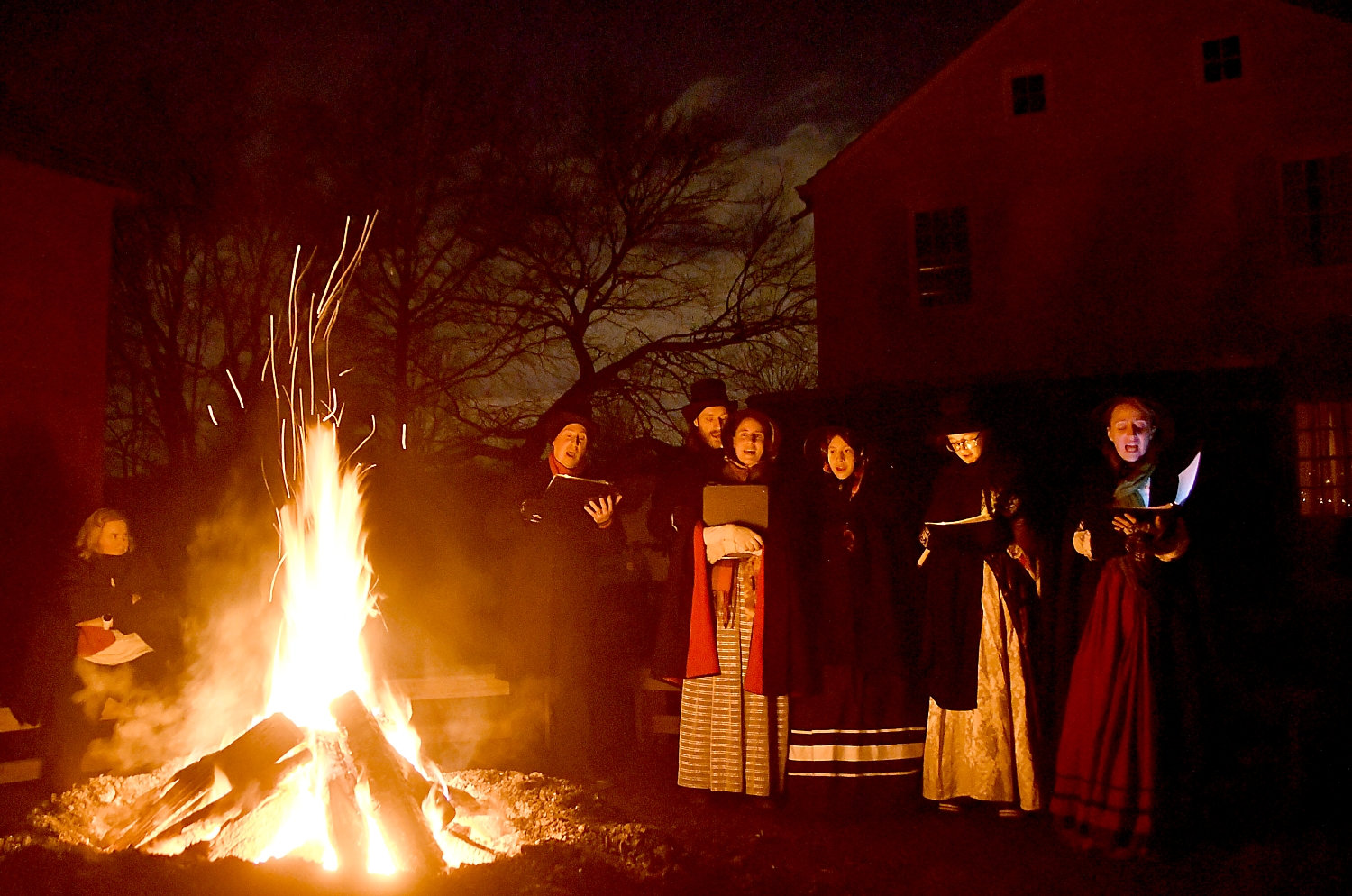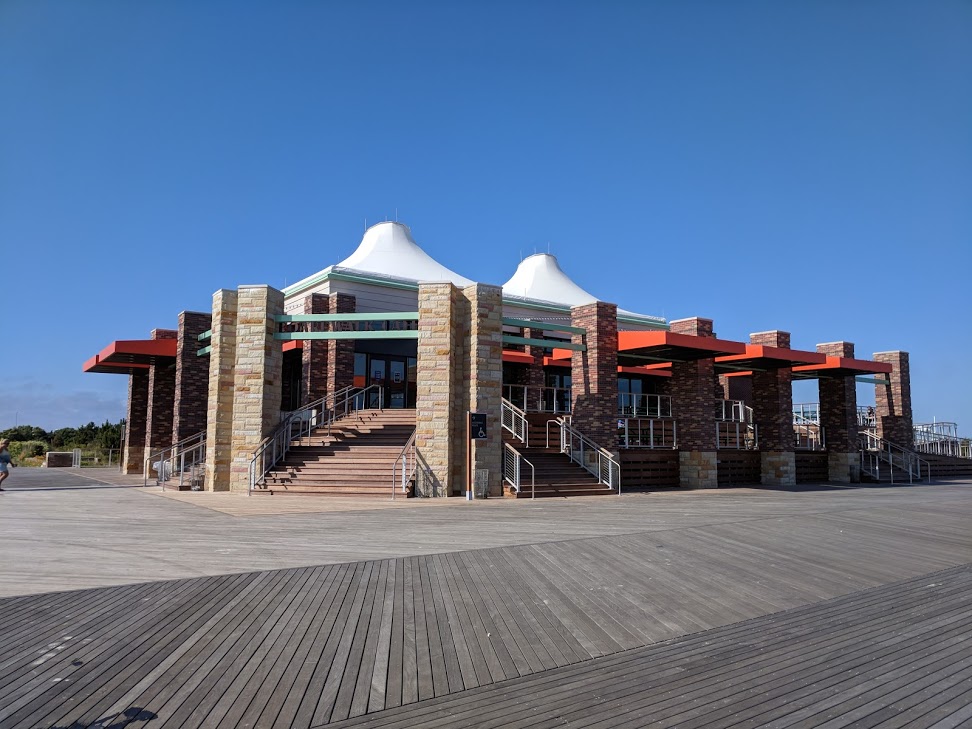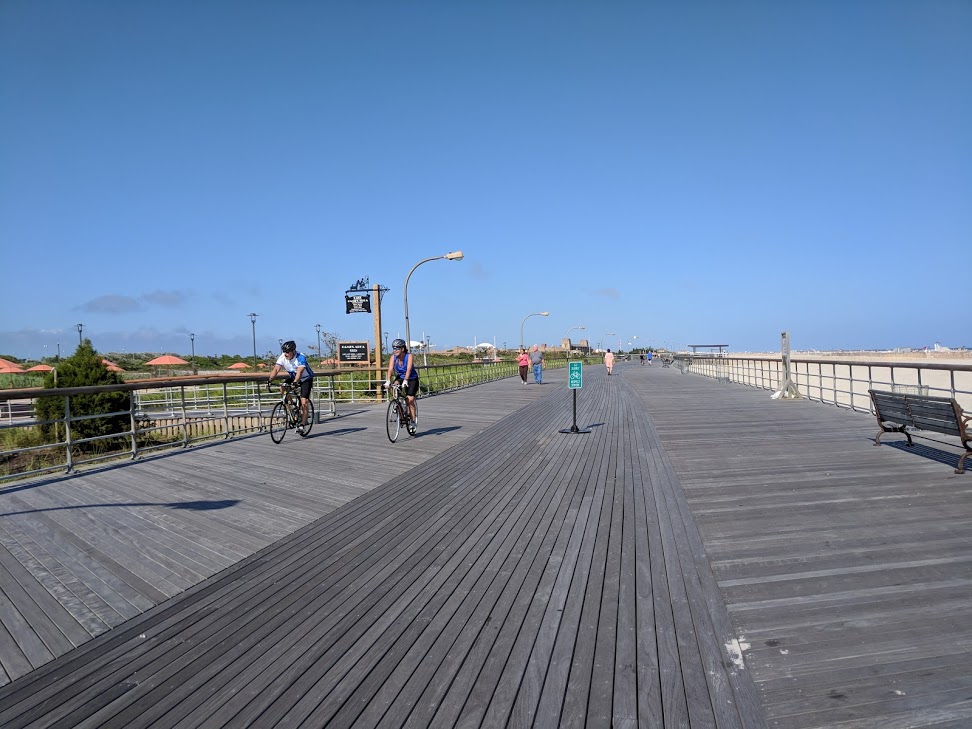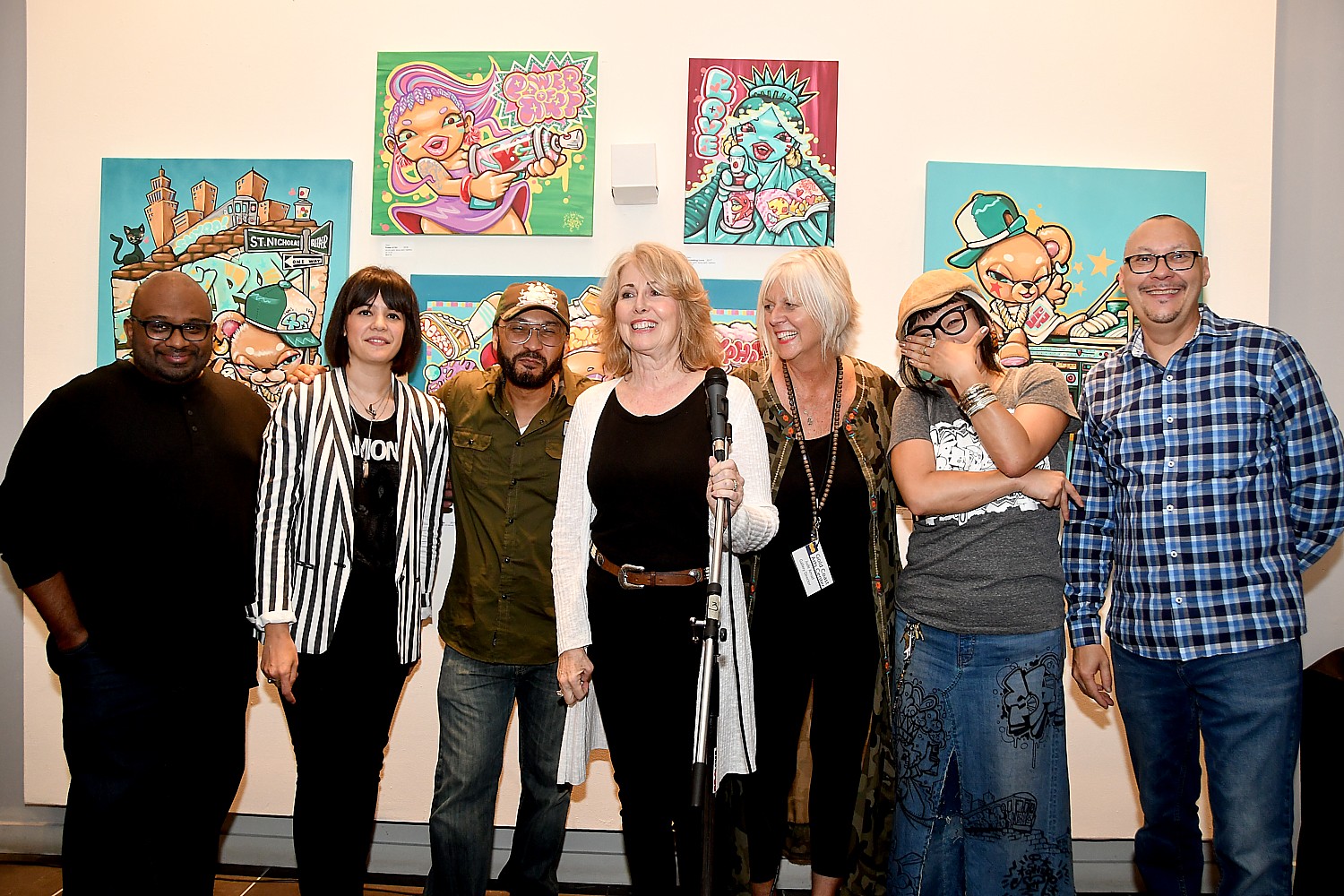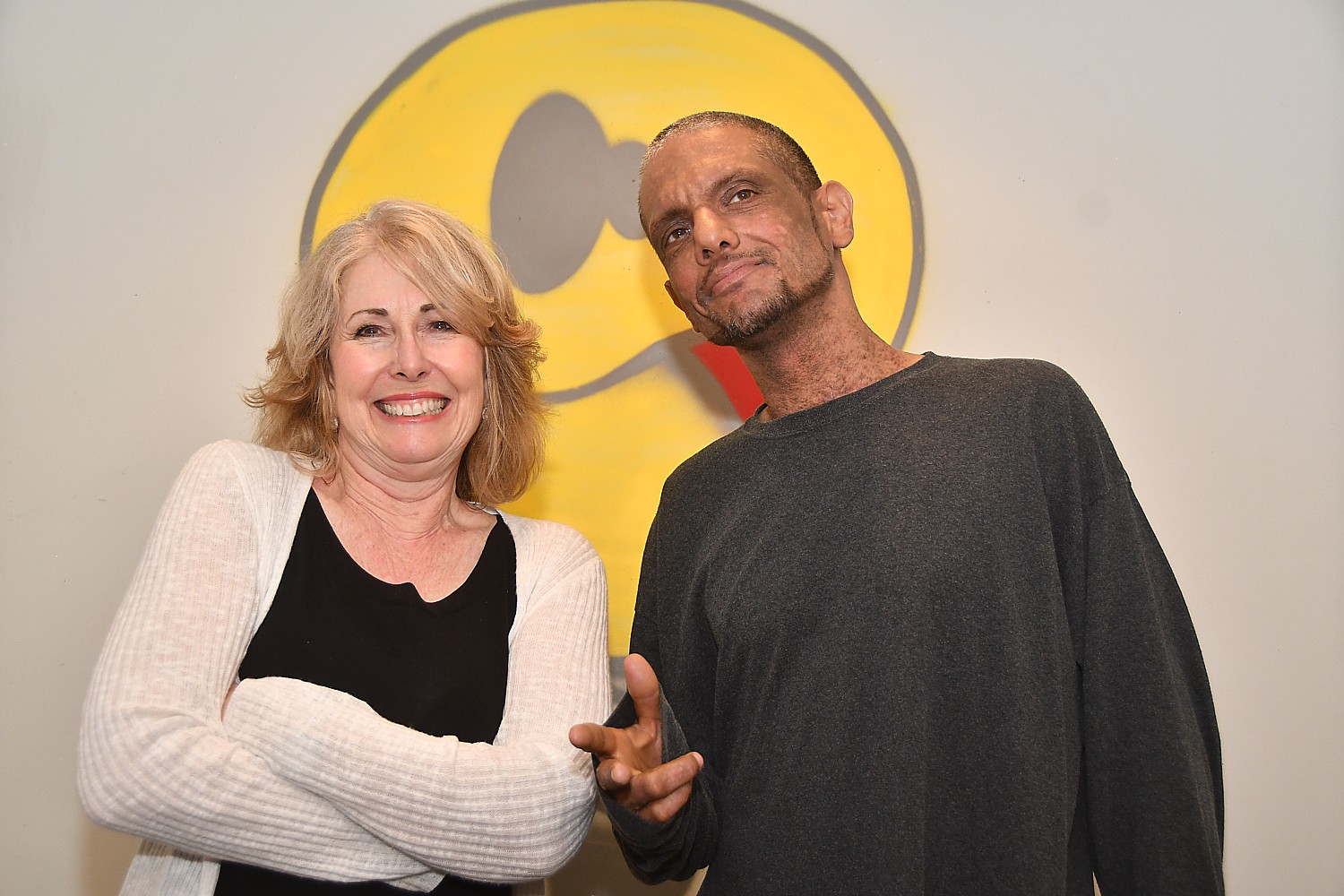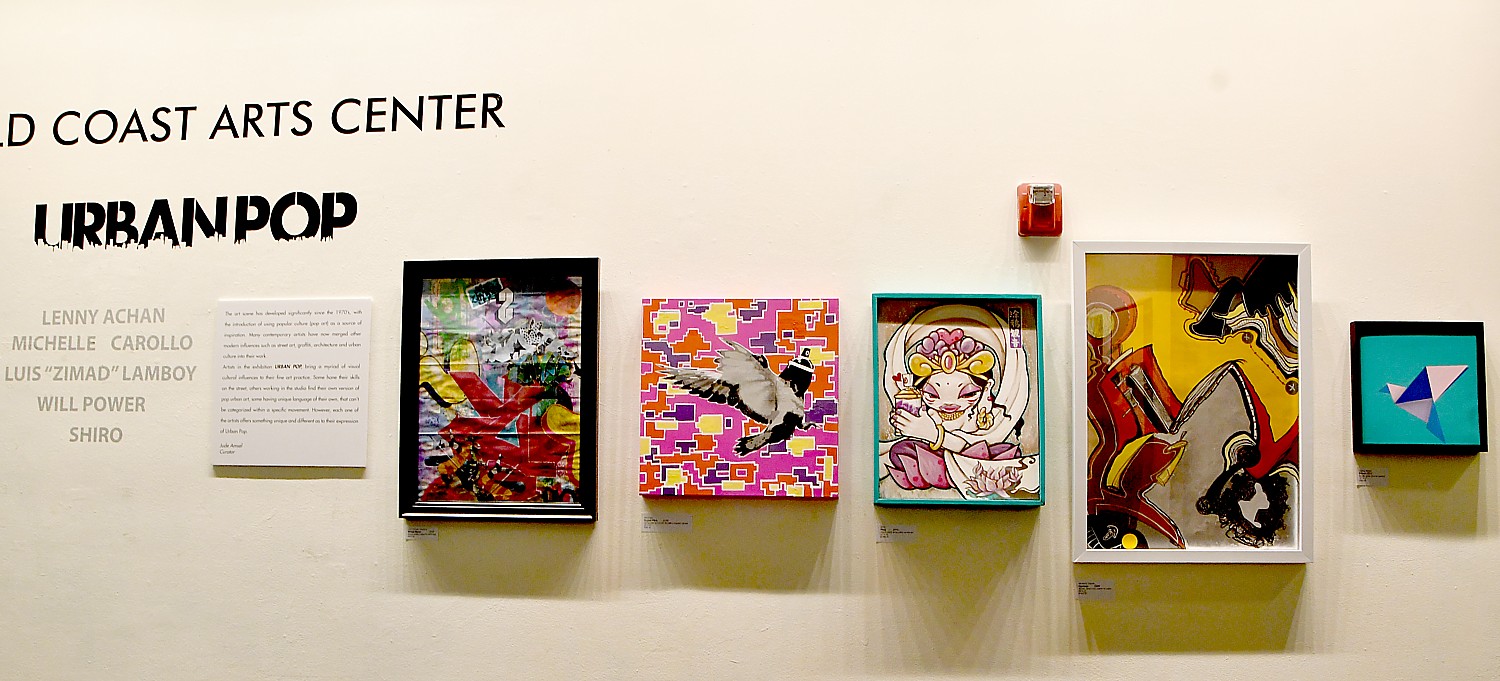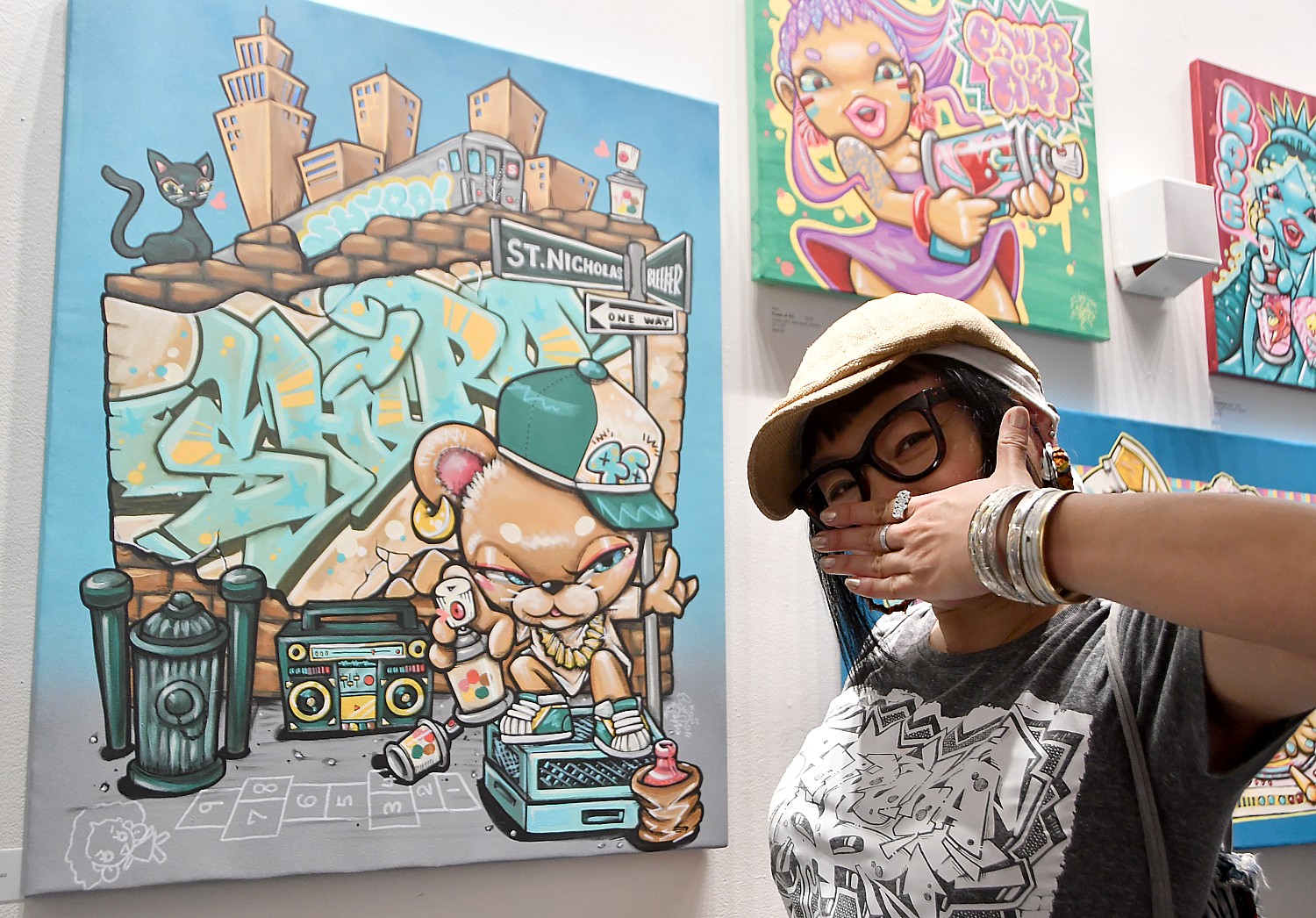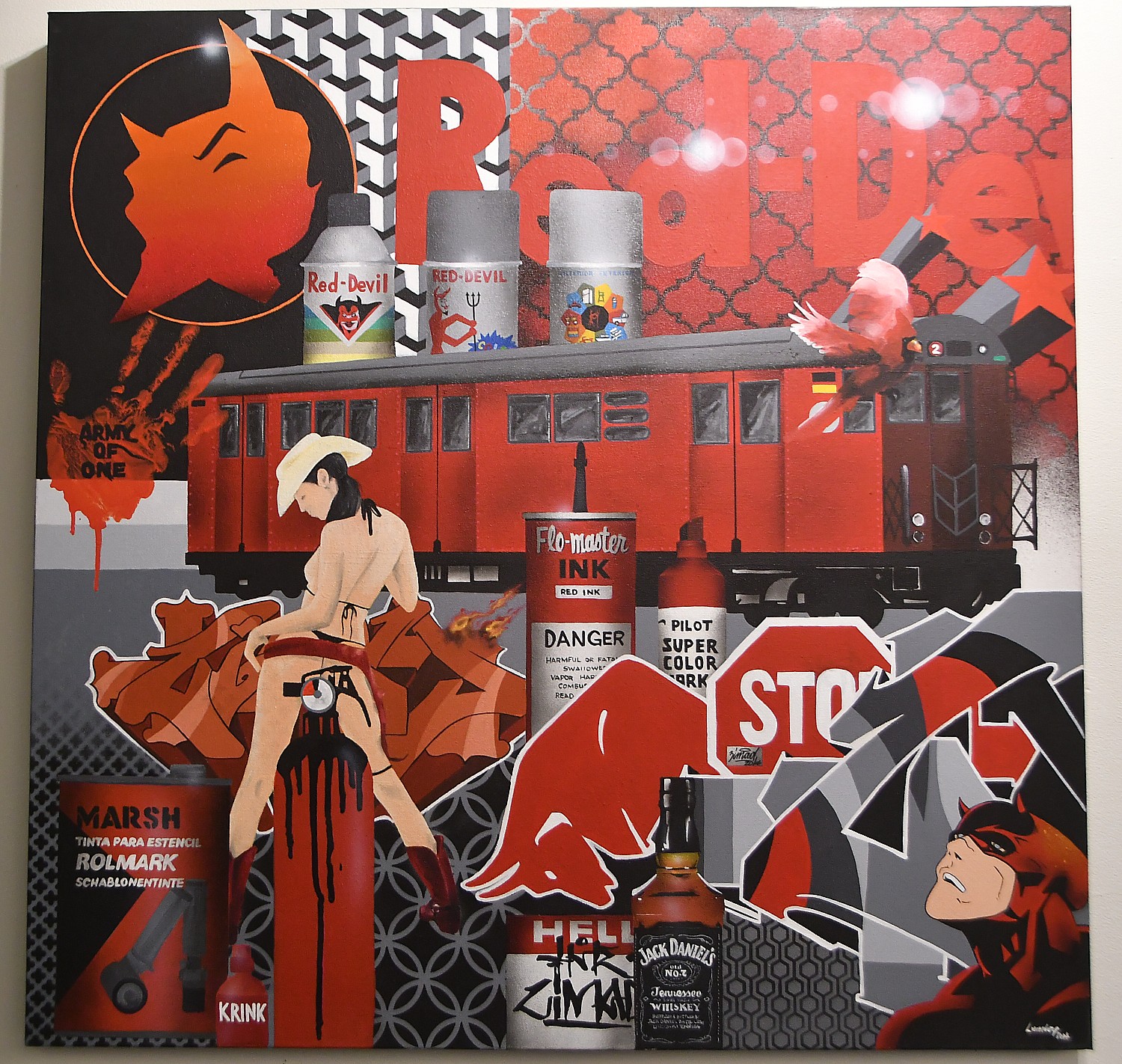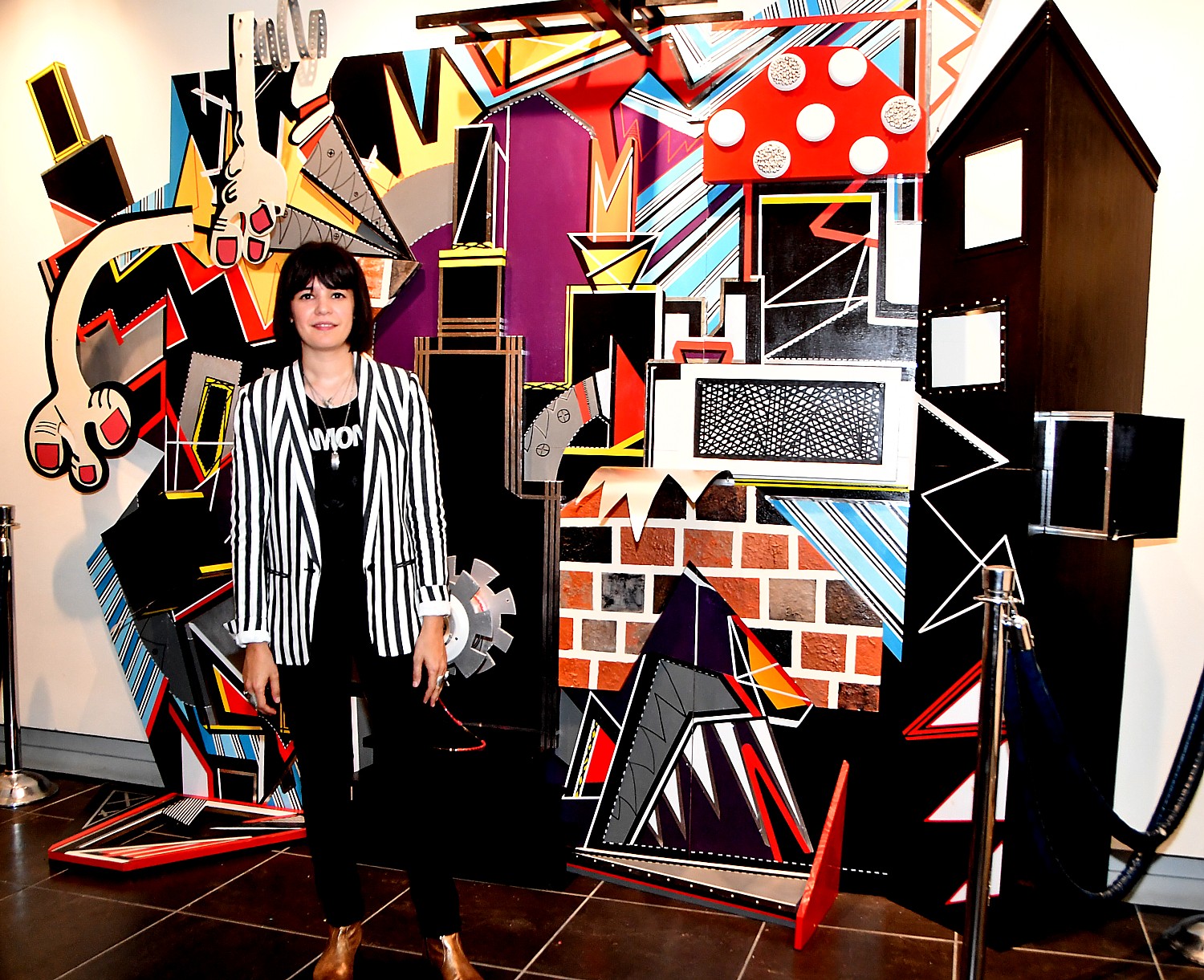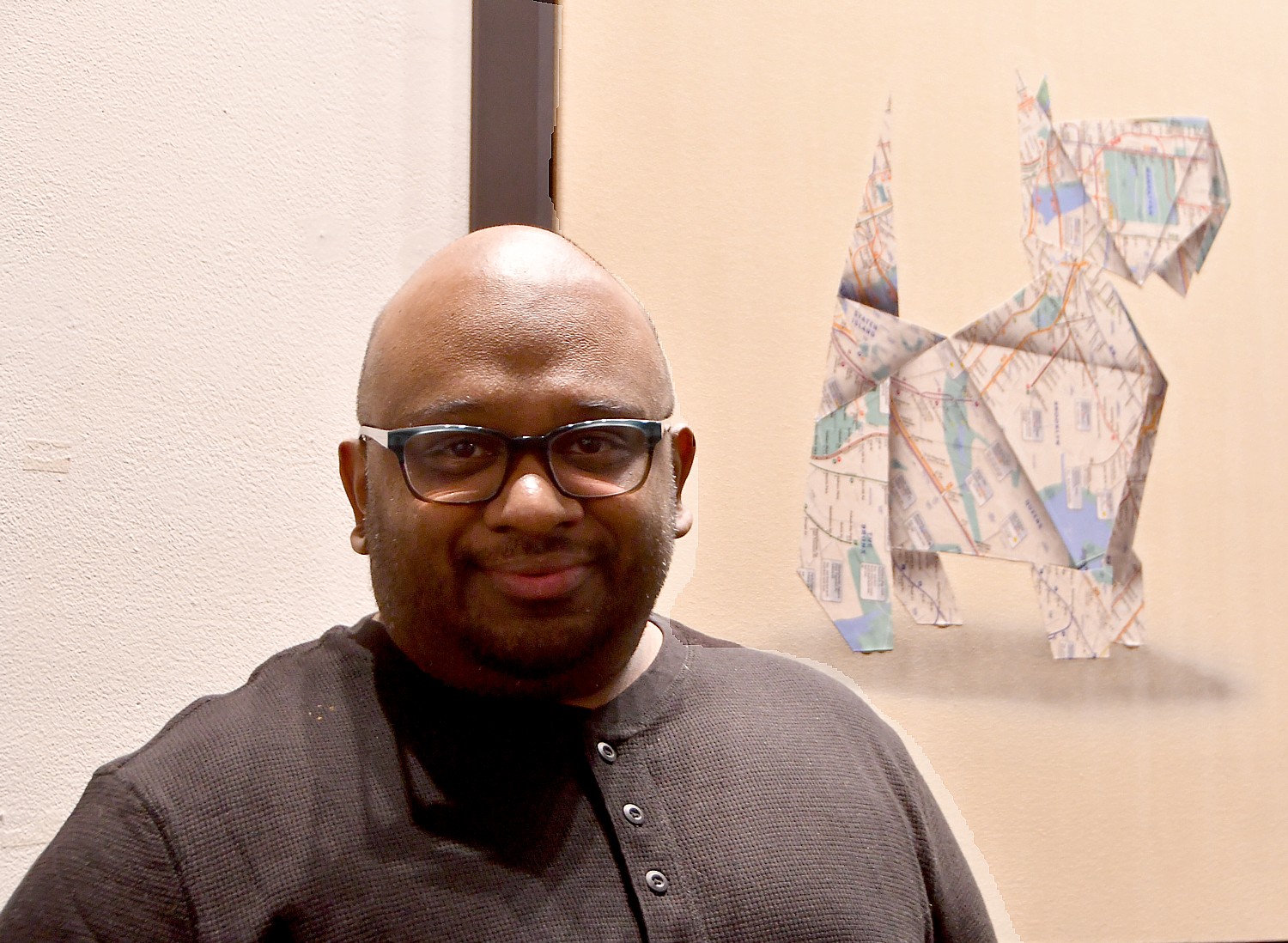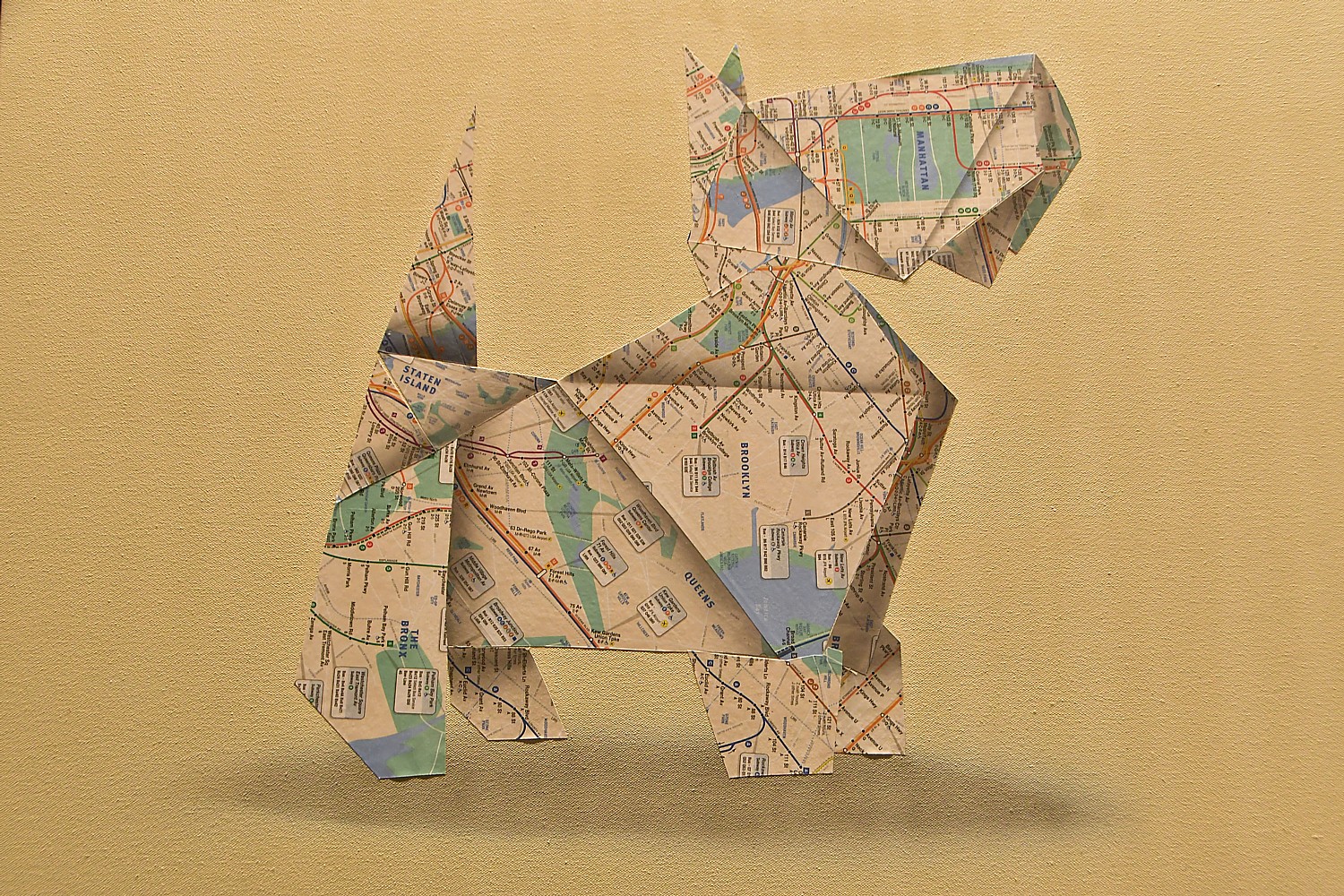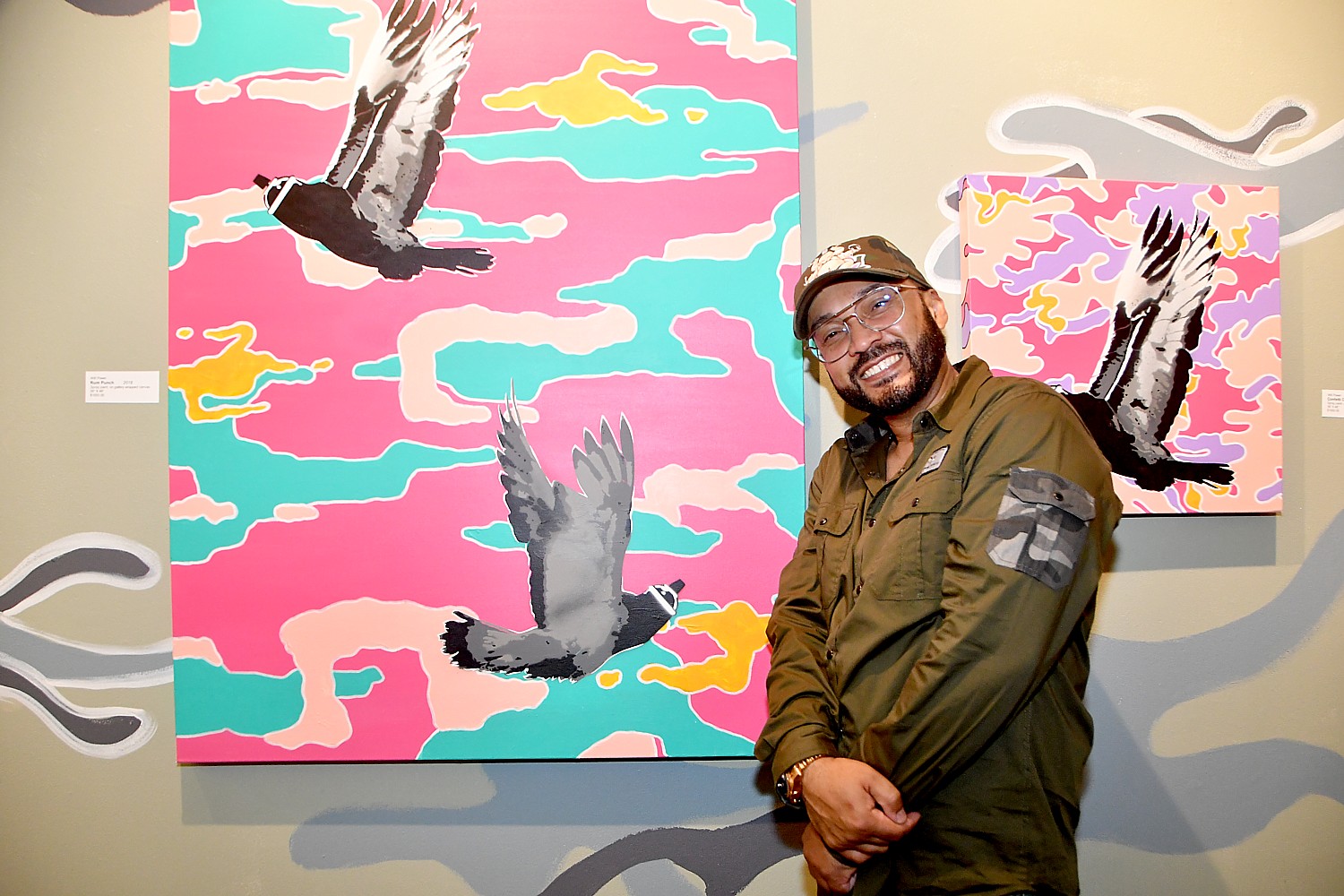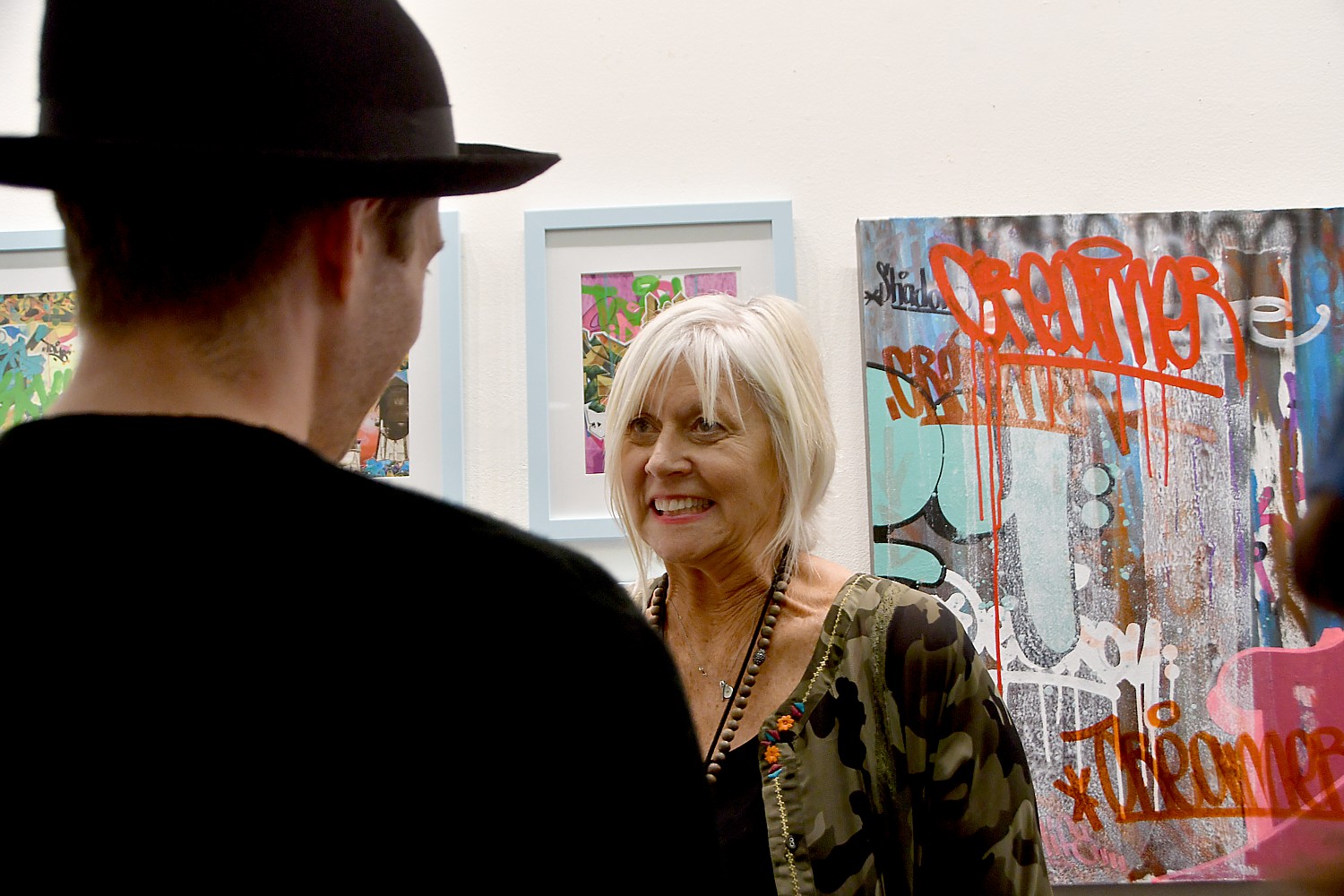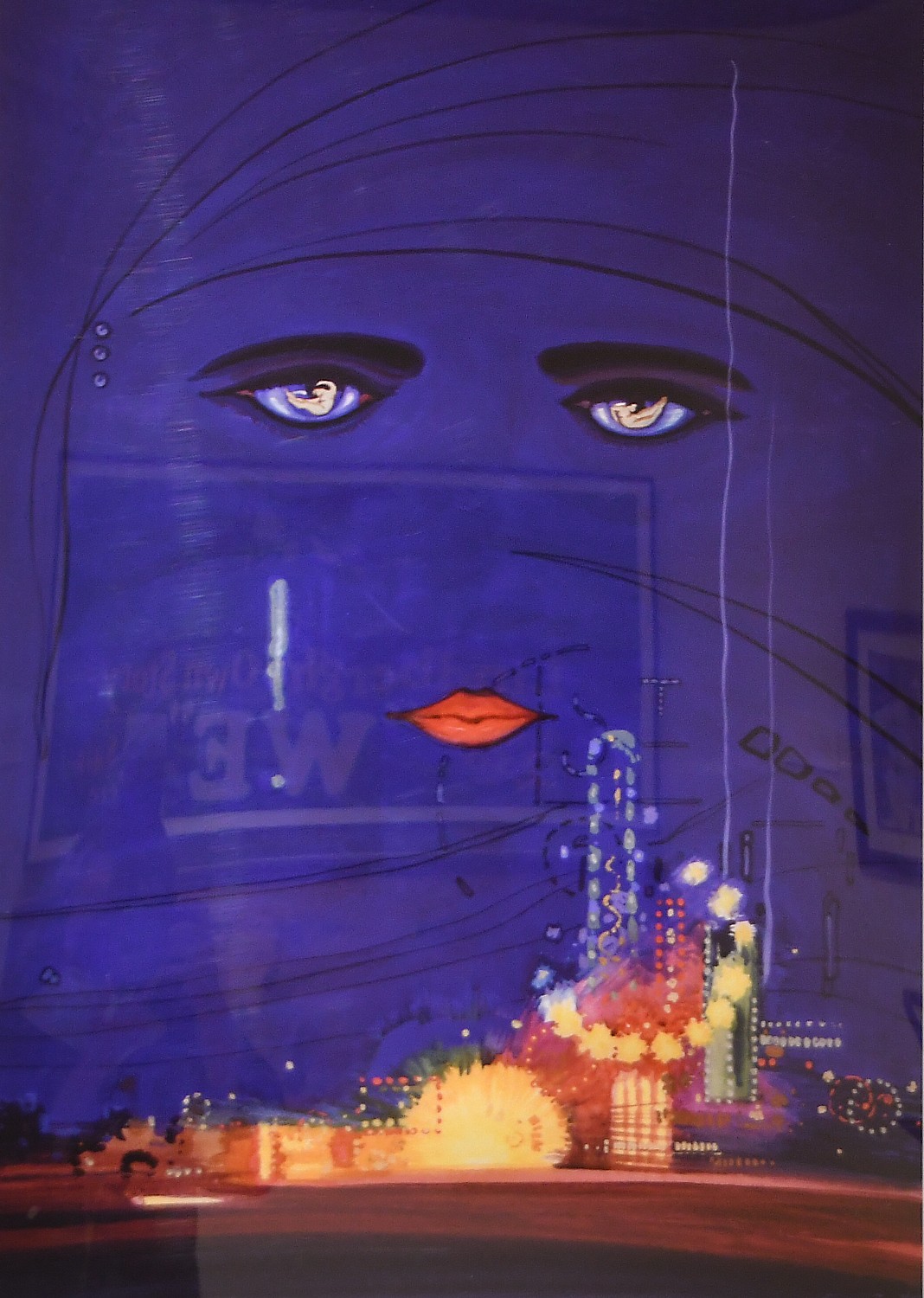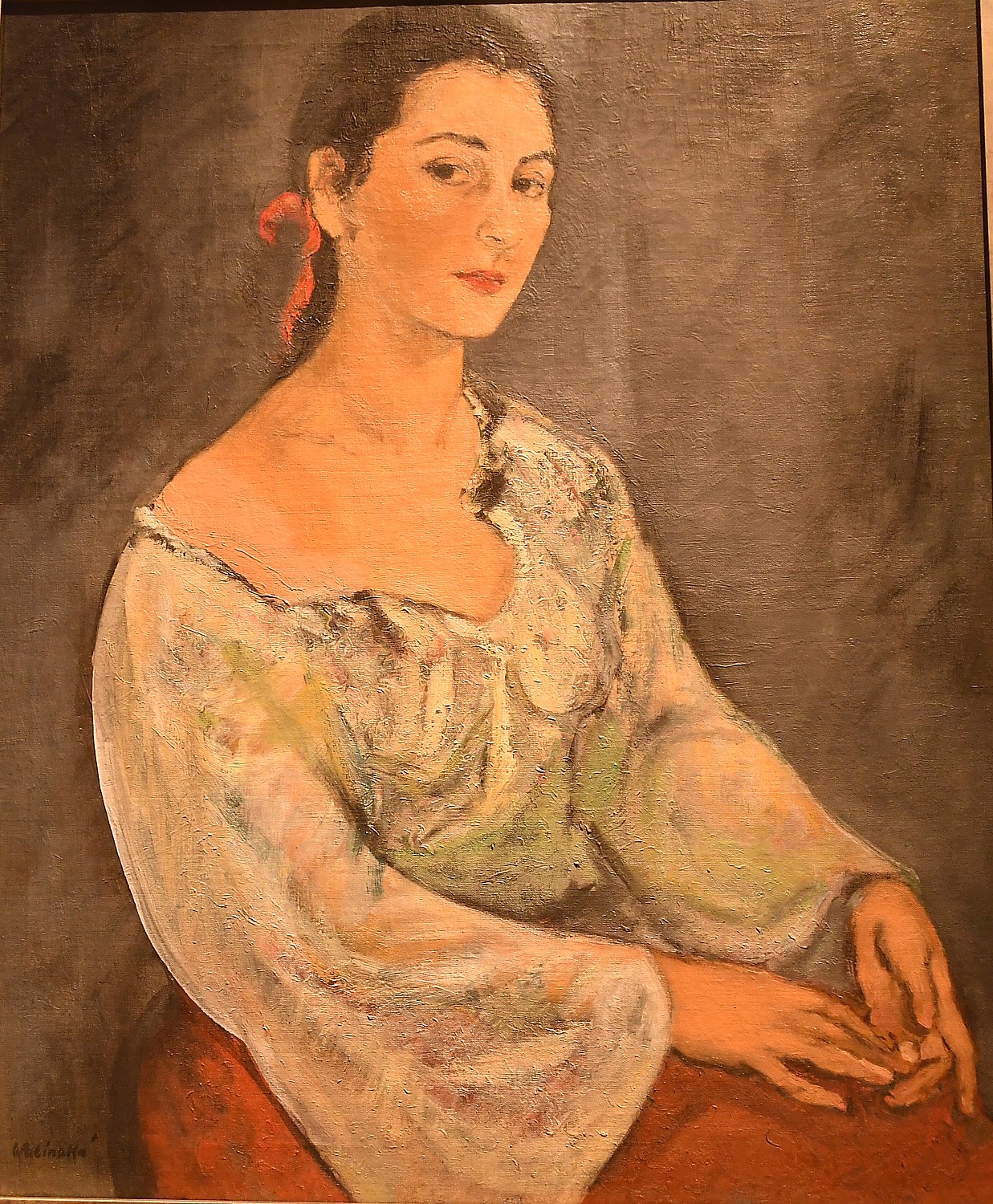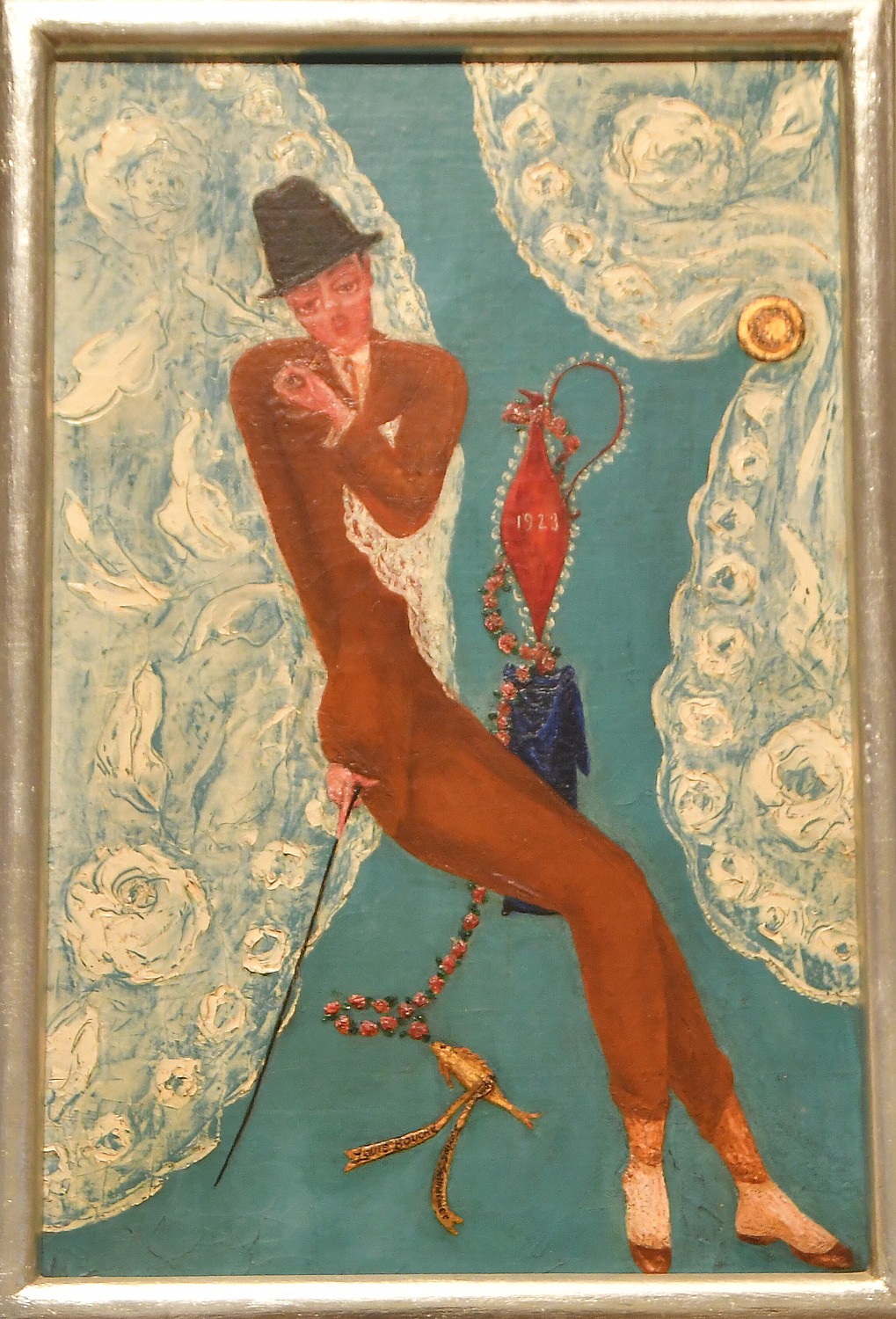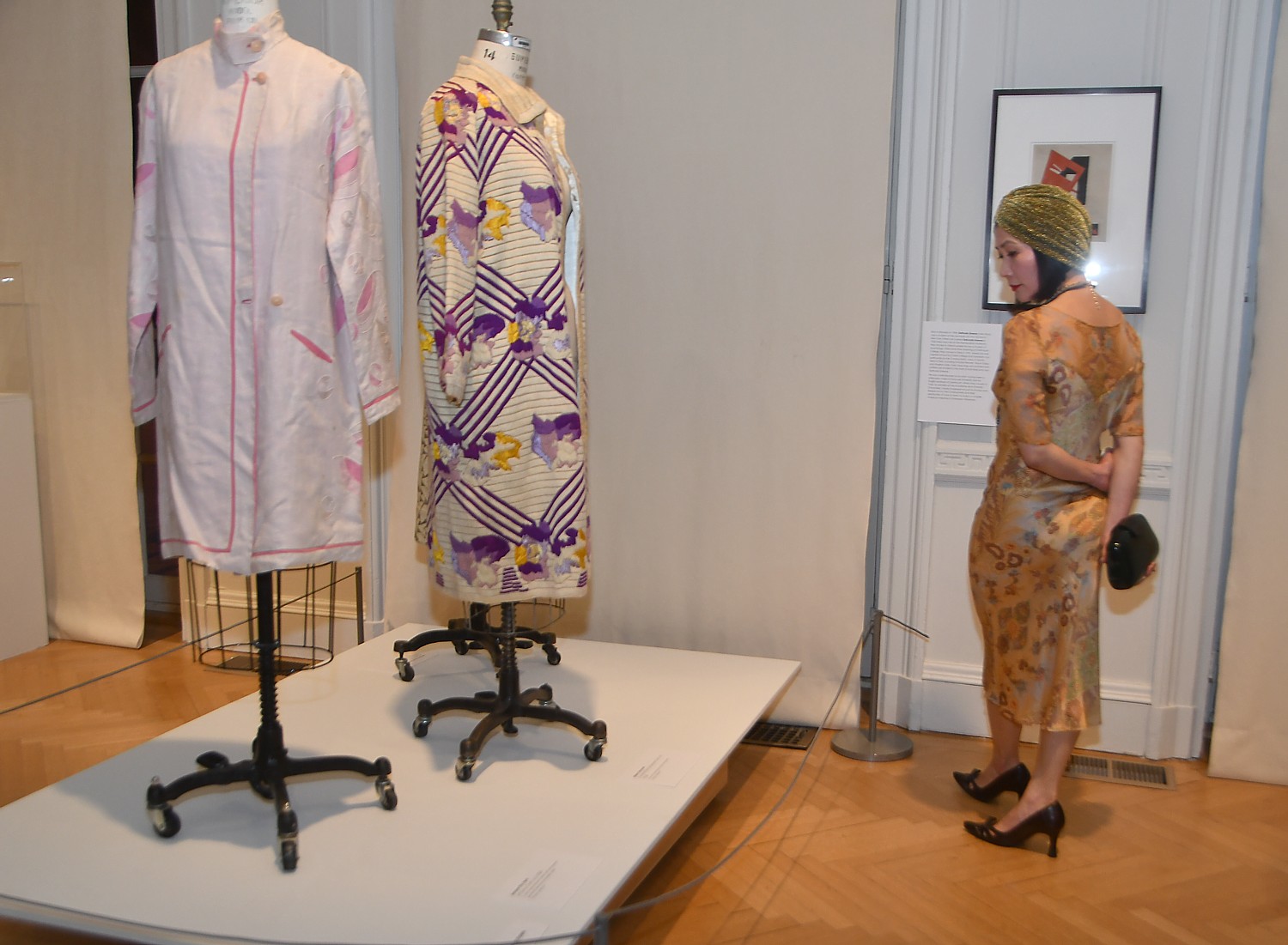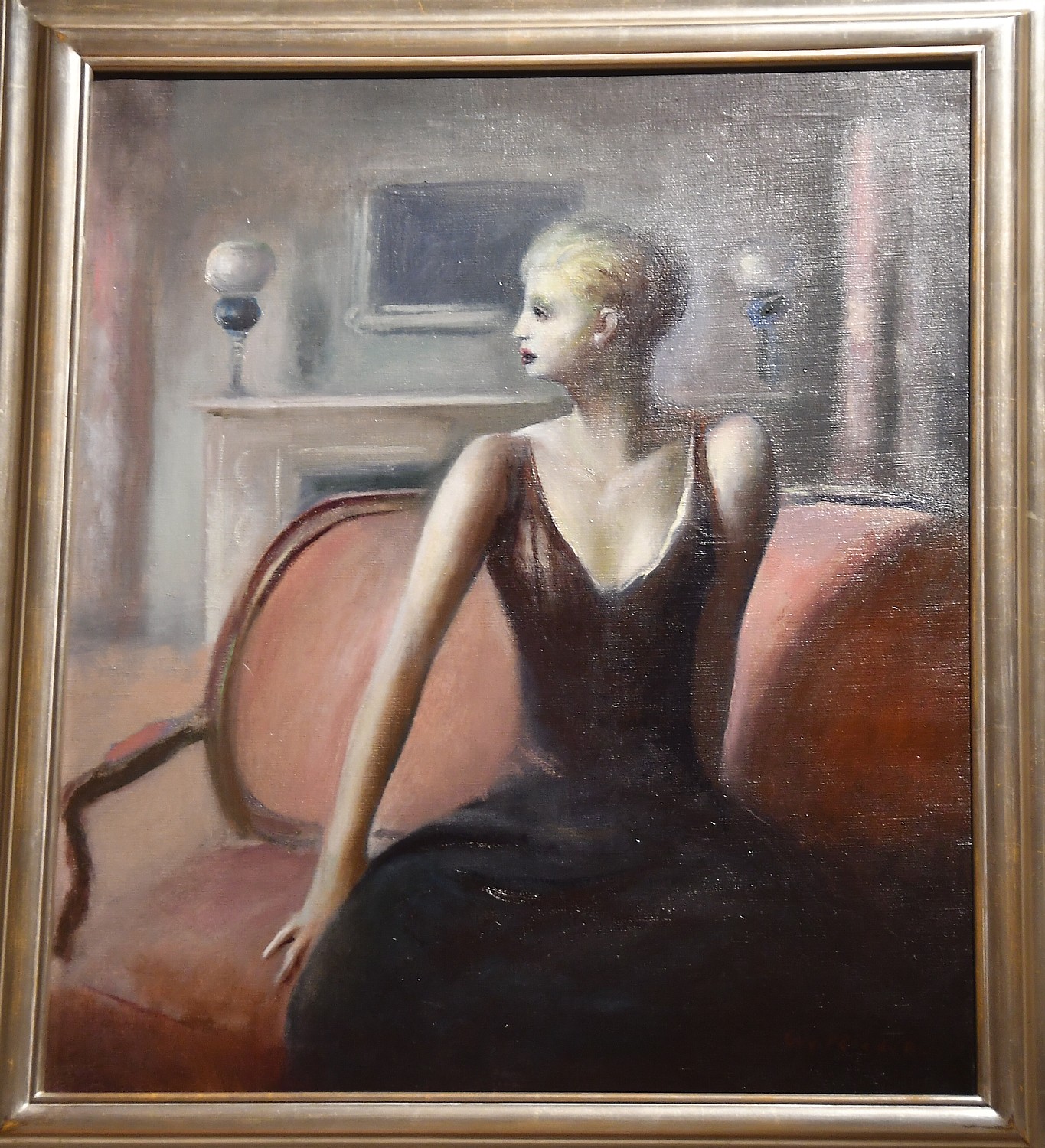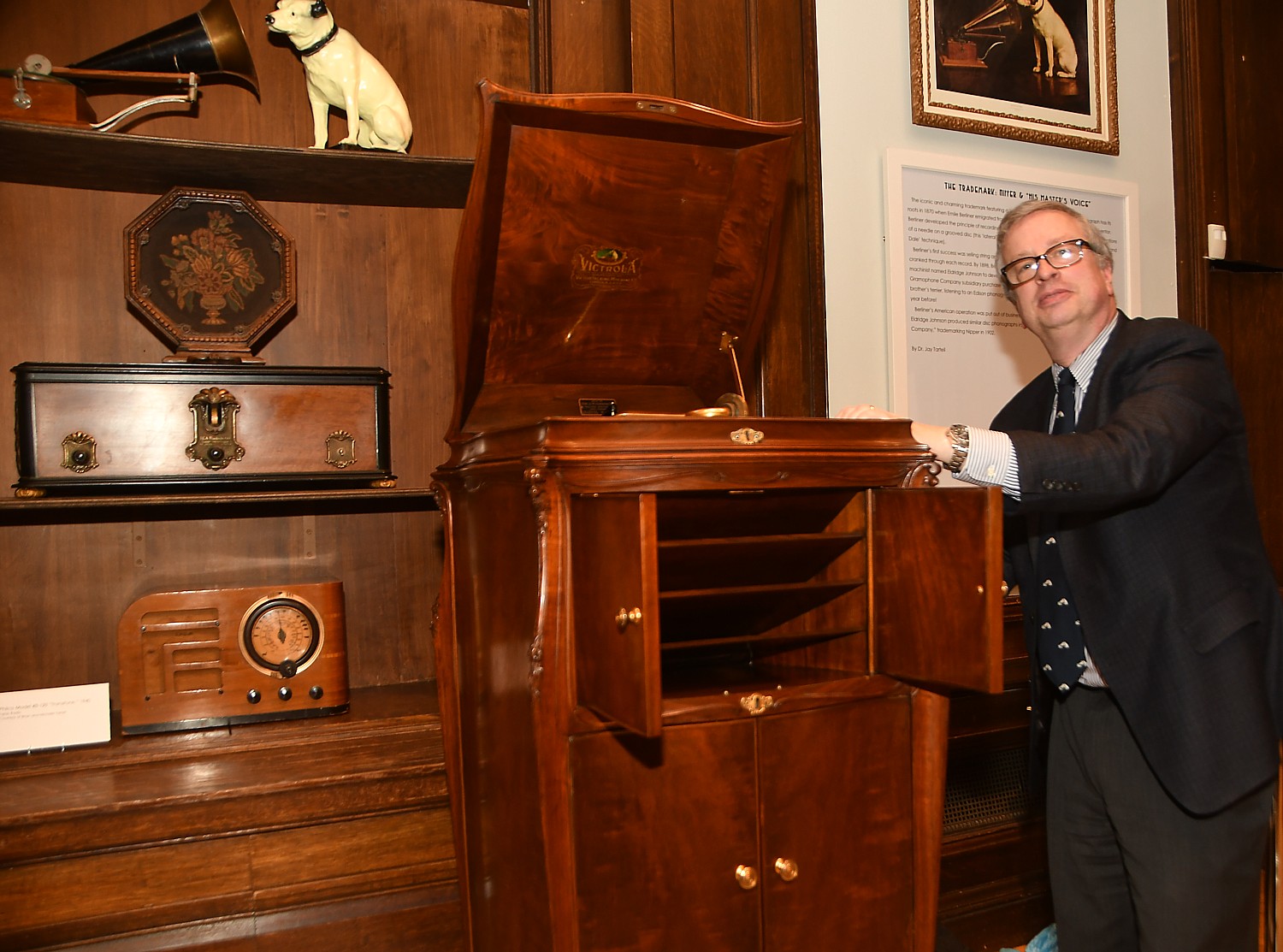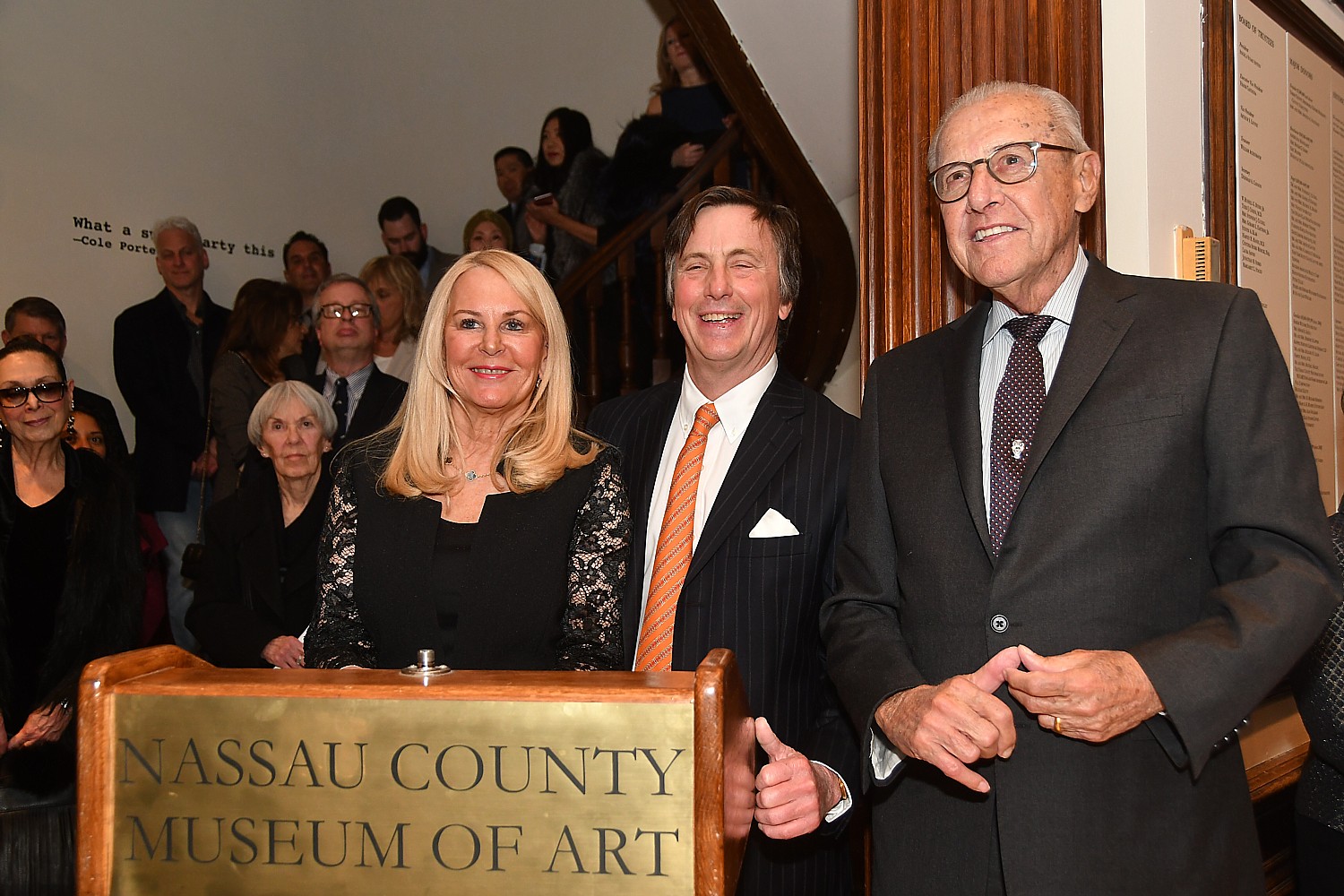
By Karen Rubin, Travel Features Syndicate, goingplacesfarandnear.com
The Gold Coast Arts Center, Great Neck, Long Island presents an exhibition of “Chinese Artists in America.” The works by eight contemporary Chinese-American artists is on view through March 20.
“The exhibition reflects the creative vitality of Chinese and American cultural interaction and growth through the arts and its historical and aesthetic links to other communities,” Gallery Curator Jude Amsel writes.
“These artists created a new visual language that embodies aspects of traditional Chinese art while responding to a time of great transition. Their artworks express personal beliefs, national pride, and international awareness.”
“The Gold Coast Arts Center is dedicated to promoting awareness and understanding through the arts and through public events that bring people together,” stated Regina Gil, founder and Executive Director of the Gold Coast Arts Center. “We are proud to have enabled artists from around the world to share their vision and craft with our audiences. The exhibition of art by Chinese-American artists weaves the heritage, experience and craft that has emerged from each artist’s personal exposure to Chinese and American culture and education.”
The opening reception for the art exhibition was accompanied by a cultural performance, music and dance presented under the aegis of the Great Neck Chinese Association.
Here are highlights, with the artists’ own statements.

Zhen Guo: “With ‘Muted Landscape; I present a view of the world, and we who live on its surface, that is at once expansive and frightening. The images, created (I do not say painted because there is no obvious brush work in the ink on rice paper creation) present a landscape as if from 36,000 feet, muted by both the gray color and by the distance. Mountains, lakes, a sheer rock face wall, caldera, fields of snow, high and pointed peaks and rivers are joined and blended but not necessarily in the places or ways we expect. It is as if the vision of Ansel Adams has been stirred shaken and kneaded merged a late Autumn vision of the natural world. As our eyes travel over the painting the view changes and rivers become shadows, mountains become fields, and lakes become snow covered peaks. We are entranced and at the same time afraid that, if we landed, there we could not find our way out. Perhaps this is a place for own internal search for a perch for our soul or to find our way forward.”

Dexiang Qian: “I was born in Zhijiang. Many artists have come to Zhijiang to observe, sketch, and experiment with depicting the rural countryside. During my creation process, I use a glazing technique with a limited color palette. I continue to simplify the elements, and the resulting composition often is in geometric patterns.” © Karen Rubin/ goingplacesfarandnear.com

Xiangdong Shi: ““Food: Chinese beauty, taste and auspicious meaning. Chinese cuisine is not only delicious, but also the pursuit of form and color, such as Sweet Dumplings, put in a few red medlar, and immediately look happy, and eat the Sweet Dumplings at the Lantern Festival, so the Sweet Dumplings are also called Yuan Xiao, means the first full moon night of the year. Chinese cuisine is rich and auspicious Meaning, such as birthday, Chinese people often cook a bowl of noodles, called longevity noodles, meaning healthy longevity. Another example is the Traditional Chinese Rice-Pudding, is the exclusive food of the Dragon Boat Festival, it is to commemorate the ancient Chinese famous poet Qu Yuan, in addition, often in the Traditional Chinese Rice-Pudding have any jujubes, white rice and red jujubes are put together, the color contrast is strong. Red has a special meaning in Chinese culture, and represents good luck. Therefore, the food series I painted not only expresses the taste of food, but also the sense of form and meaning of food. This is the true essence of Chinese culture.”

Arthur B. Liu is President of Queens Art Education Center, New York, visiting professor of the Guangzhou Academy of Fine Arts, member of the Watercolor Society of USA, artist of the National Art League of USA, director of the Chinese Culture Art Association of New York, USA. He is the Educator, Artist and Inventor. He is the only one Chinese American artist who has been granted patents for inventions. He is showing “The flowing colors Chinese painting series” in this exhibition.

Ping Wang: “The initial idea of my “In and Out” series were body parts extended from a “Square”(space ) merged into a background. The background scenes are from Chinese illusional landscapes to recent New York City landmarks and daily life. After a year or two reminiscing in depth I subconsciously escaped in the collision between China and American culture. I was enormously inspired by traditional Chinese composition and techniques. In the ‘Fight Club; series, I tried to combine some oriental perspectives and compositions into a Western story. Now living in New York for several years, I can see the integration of eastern and western cultures.”

© Karen Rubin/goingplacesfarandnear.com
Yulin Huang: “In the face of the canvas, I have never forgotten all the so-called knowledge, just by intuition, in a simple, primitive, child-like way, straightforward and quick to smear. “Sacrifice the Body to Feeding the Tiger” (2018) is a “Dunhuang” mural from the ancient East, painted on the walls of the grotto 2000 years ago. It tells a Buddhist story. A prince, giving up his life and helping his hunger with his own flesh The hungry tiger mother and son are born into Buddha after death. Like the cross that Jesus passed. In “Chinese New Year,” red lanterns, dragon dances, lion dances, firecrackers, fireworks, spring couplets, red envelopes… The people celebrate the biggest festivals, joyous and lively. But I feel a very loneliness.”

Hai Wei: “Even though we all advocate tolerance, different habits and beliefs sometimes constitute an offense. Each different culture and art is connected of each other while learning from each other and integrating with each other. When the plane flies over the Arctic Circle, across the window, the outside is a mountain like a scarf, inside is a scarf like a mountain… All things connected, miraculous conversion. Similarly, in the body, the blood, the fresh life, can also be converted and reincarnation? We have been watching ourselves for too long and rarely look at them. Most people think the sheep is weak ,ordinary, silent. In fact, they still have power and charm of wildness. The art created by nature is life, the beauty of life, and it does not depend on us. It is a kind of dignity.”

Yafu Wang: Yafu’s works are varied and diverse. Those selected art pieces cover his early works in road, shadows, posters, and temples etc. Yafu always states that his work expresses his deep love and awe for the mighty God. It fulfills all the missing parts in his life.
Here are highlights from the performances:

Chinese Drum “Ma Deng Dance” featuring Anthony Wu, Dorie Liu, Kexin Huang, Yuxin Huang, Kingsley Liu. © Karen Rubin/ goingplacesfarandnear.com

Chinese Guzheng Duet “Dong Ting New Song” featuring Ella Li, Shiying Wei. © Karen Rubin/ goingplacesfarandnear.com

Chinese Cucurbit Flute Solo, “Wedding Vow,” featuring Ricky Deng © Karen Rubin/ goingplacesfarandnear.com

Violin & Piano in Chinese song, “Painted Heart” with Aili Tian, Phoenix tian, Joy Yang and Selena Lu (piano). © Karen Rubin/ goingplacesfarandnear.com

Chinese Instruments ensemble “Xi Yang Yang (Be Happy)” “Turpan’s Grapes Turn Ripe (with Dance)” featuring Xiulu Xin (Banhu):, Yuqi Sun (Erhu), Xianyi Wang (Dulcimer), Xiuzhen Liang (Ruan), Rongxian Chen (Electronic Guitar), Cathong Li (Rock Percussion/Dance) © Karen Rubin/ goingplacesfarandnear.com

Children’s Chorus: Jasmine Flowers featuring Evan Cao, Derick Chen, Melissa Chiang, Jessica Chiang, Anthony Chiang, Athena Jin, Ella Li, Jack Pei, Dorothy Qian, Lucas Wang, Madeline Wang, Isabella Wu, Kenneth Wu, Katharine Xu, Carolyn Zuo and Kaitlyn Feng (piano) © Karen Rubin/ goingplacesfarandnear.com

The Gallery is open when the Gold Coast Arts Center is open, 113 Middle Neck Road, Great Neck, NY, 516-829-2570, goldcoastarts.org.
_______________________
© 2019 Travel Features Syndicate, a division of Workstyles, Inc. All rights reserved. Visit goingplacesfarandnear.com, www.huffingtonpost.com/author/karen-rubin, and travelwritersmagazine.com/TravelFeaturesSyndicate/. Blogging at goingplacesnearandfar.wordpress.com and moralcompasstravel.info. Send comments or questions to FamTravLtr@aol.com. Tweet @TravelFeatures. ‘Like’ us at facebook.com/NewsPhotoFeatures
